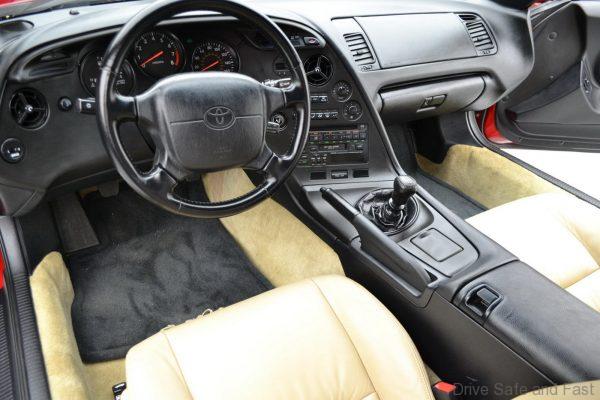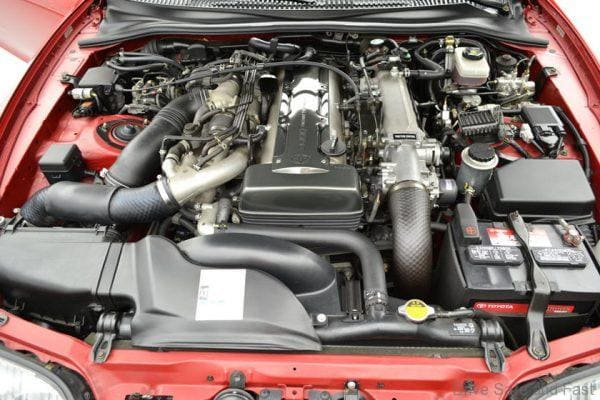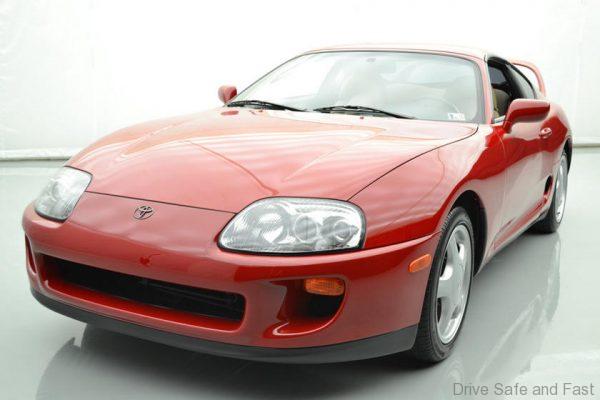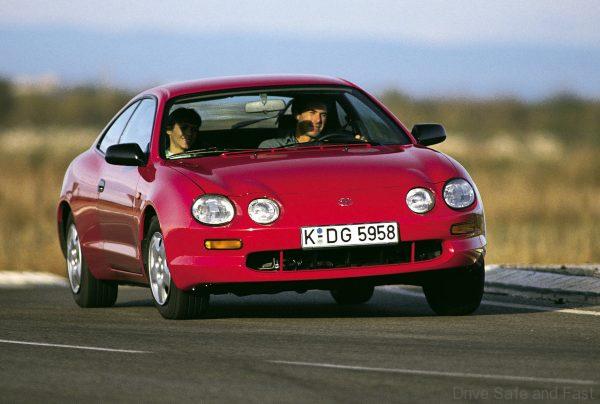Toyota Celica 6th Generation Should Not Be Ignored
Since the revival of the Supra nameplate, the prices of used Supra’s have gone higher than some air-cooled Porsche 911s and it is rather small numbers on the road makes it even more valuable.
Last year January a car collector in America paid USD121,000 (RM525,000) for a very low mileage (just 7,000 miles) year 1994 Toyota Supra Turbo which looked like it just left the factory floor.




Yes, the last generation, year 1993 Toyota Supra is a seductive looking machine and has many admirers for its twin-turbo in-line 6 cylinder 3.0L engine that produced 320bhp but we are not going to dream about owning a unit. We are looking elsewhere.
We have been lucky enough to get behind the wheel of a 1993 Toyota Supra many years ago for a short drive, it had a driver’s cockpit, a nice sounding engine and it was fast for its time. At the time, the Nissan 300ZX and the Mitsubishi 3000 GT were its direct rivals and they also offered similar performance and driving entertainment, but it was the technology filled Mitsubishi 3000GT that was on the wish list of many of us at the time due to its drop dead ‘Ferrari’ like looks and its very interesting and rather complicated drive system.

Today, the asking price of the Mitsubishi 3000GT and the Nissan 300ZX hovers between RM45,000 to RM65,000 depending on condition, accessories added and there are units for sale online, so take your time. We are looking elsewhere.

The Car We Want
But the car that you and many other petrolheads have probably forgotten about is the sixth-generation Toyota Celica which was launched in Japan in early 1994. Primarily this Celica GT-Four was built (just 2,500 units worldwide) for Group A racing in the World Rally Championship (WRC).
This was the most potent Celica ever built and it had a 3S-GTE 2.0-liter turbocharged four-cylinder engine that produced 252bhp (Japan only units had 252bhp and the rest of the markets got a 239bhp engine) worked by a close-ratio, five-speed manual gearbox that channeled the power to all four wheels.





Throughout the 80s and early 90s, Toyota usually stuck to a four-year production cycle with a mid-life refresh halfway through. This rapid turnover meant that development of a new model often started soon after the launch of the current generation. In the case of the sixth-generation Celica, work began in the spring of 1990. Hundreds of proposals were evaluated, with the aim of giving the next car a more distinctive ‘face’. This is why it looked radically different at the time.
Once again built around a purpose-built coupé formula, this sports car borrowed styling cues from the iconic Mk4 Supra and was the first Celica in many years not to feature pop-up headlights. Engineering advances allowed the body-shell to be fractionally larger, substantially stronger, yet around 90kg lighter than the previous Celica. Its engine and the MacPherson strut/dual link chassis setup were pretty much carried over from the last generation. Some Malaysian gray import car dealers sold a few units of 2.0-litre model that provided a temptingly priced entry into Celica ownership but we are looking just at the GT-Four.

Toyota GT-Four Celica ST205 Specifications
| Model | GT-Four |
| Year of production | 1994 — 1999 |
| Layout | Front-engined, four-wheel drive |
| Engine | Inline-4, 3S-GTE turbo |
| Capacity | 2.0-litre |
| Power(hp) | 252 (JDM), 239 (Export) |
| Torque(lb ft) | 224 |
| Gearbox | 5-speed manual E154F |
| Tyres | 215/50 R 16 |
| Weight | 1390 kg (3064 lbs) |
| Top speed | 245 km/h (152 mph) |
| 0 – 100 km/h (62 mph) | 6.3 seconds |
Issues to Look Our For When Buying Used
This is a performance car and so the previous owners would have had their ‘fun’ with this sports car.
Start by getting the chassis checked for accident damage or for ‘cut and joined’ cars. There could be many severe accidents cars fixed with half-cuts from Japan over the years. Next is the drivetrain.
Engine wear will be high so check for oil leaks where the car is parked and looks for vapor and smoke on ignition. You need to be standing behind the car when the owner starts it up to see this. White, blue and or black smoke are all engine issues that should bring the price down.

On a test drive, slow acceleration and late power boost would spell a failing turbocharger. After a short drive, stop, open the hood and listen to the engine up front. You can hear a shifting heart beat of the engine and decide if its healthy. The same goes for the turbocharger when you get the owner to rev the engine while you listen up front. Gearshifts should be smooth and without hesitation from gate to gate.
Now after these above simple checks are done. You will need to bring the car to a mechanic you trust (if you need a workshop suggestion contact us) to do a final check on the differential, clutch, suspension, brakes and overall wiring. Over the years many hands might have been under the hood and some might have been dodgy.

If it all checks out okay, they you are a lucky person as there are only a handful of these cars worth buying today. Now comes the price.
During this lockdown period we only managed to find one 1995 Celica that has been ‘converted’ to ST205 specifications with a lot of work done. The car looked good in pictures and the asking price was RM60,000 (cash only, no loan due to its age). Then there was another well looked after 1995 ST202, stock 2L version asking for RM73,500.

Sadly, no original ST205 on sale and so the wait continues.